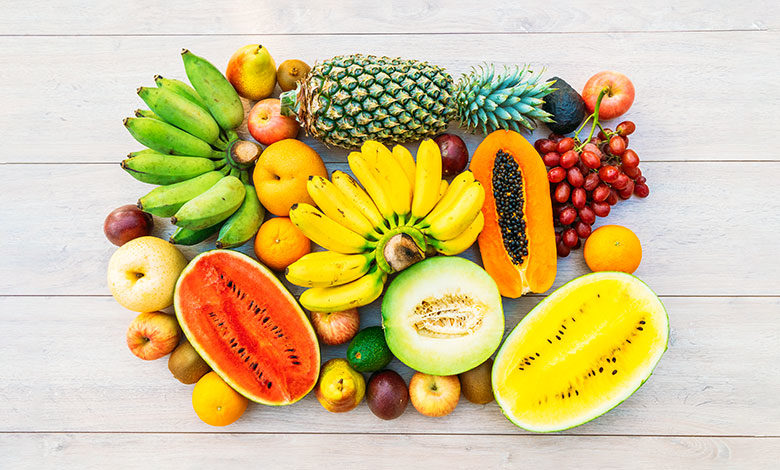Health Benefits of Seasonal Fruits of Bangladesh

The rainy season is finally upon us, but so far with the exception of occasional winds and drizzle, it’s still quite hot and humid. It goes without saying that we aren’t exactly living in favorable times now – with the unpredictable weather on top of the ordeal that is the ongoing pandemic.
But, life doesn’t stand still, we adapt and live with the times, making adjustments when circumstances call for it. One such alteration is our increased focus on health and nutrition during these troubled times, as we want to improve our body’s immunity. And we cannot stress this enough – it is high time to start eating nutritious food. As you might guess what follows, some of the best sources of nutrition are the seasonal fruits of Bangladesh.
Our climate allows us to have rich, nutritious fruits of different colors and tastes through all the seasons. Although summer is gone, many summer fruits are still available in the market. However, the taste of fresh and in-season fruits is definitely better than those that are still around beyond their season.
Fruits like mango, blackberries, jackfruit, lychee, pineapple, palm fruit, or ice apple are now found in abundance – all being convenient sources of important vitamins and minerals. In addition, these fruits keep our body healthy by providing other nutrients such as carbohydrates, proteins, and water. Let’s get deeper into the nutritional and health benefits of different seasonal fruits of Bangladesh.
Advantages of having seasonal fruits of Bangladesh
Mango
The mango is a one of a kind fruit, superior in taste and quality to most other fruits. It’s hard to find someone who doesn’t like mangoes. There are varieties of mango in our country, among which Langra, Fazli, Himsagar, Amrapali, Gopalbhog, and Haribhanga are more popular. Besides consuming raw and ripe mangoes, we also make many delicious local and foreign dishes out of mangoes. Vitamin A content of the mango is higher than any other fruit, and it also has vitamins B and C, minerals, calcium, and carotene. Nutrition from mangoes is great for hair, skin, digestive system, and vision.
Blackberry
Just mentioning the name of this sweet and sour fruit is enough to make your mouth water. Covered with a thin layer of black skin, the inside of the fruit is light pink to deep purple color when ripe. Rich in Ayurveda and medicinal values, this fruit has many nutritional properties. Blackberries are rich in vitamin C, antioxidants, zinc, copper, phosphorus, potassium, magnesium among others, which are able to prevent high blood pressure, cholesterol, weight control, diabetes, and even malignant cancer.
Jackfruit
Any idea why the jackfruit is hailed as our national fruit? It can be consumed in many different forms. It is a common saying in rural Bangladesh that a single jackfruit can feed an entire family. Young children, pregnant women, and the elderly – everyone can have it. When unripe and underdeveloped, small jackfruits called “Muchi” are eaten with pickle. Raw jackfruit can be cooked and eaten as a vegetable, and it also helps to control blood sugar. Moreover, jackfruit seeds can be cooked with different vegetables like potatoes. Ripe jackfruit acts as a tonic, as it contains sufficient amounts of sugars, fructose, and sucrose.
Lychee
This juicy little sweet treat is only available for a small window of time during the year. Lychee is an excellent source of vitamins, nutrients, and essential minerals. Full of vitamin C and antioxidants, regular proactive intake of this fruit may protect against terminal cancers, especially breast cancer. It is also quite effective in controlling blood pressure. Lychee plays a role in maintaining the strong feeling of teeth, bones, and radiance of the skin.
Pineapple
Prickly on the outside but sweet on the inside, the pineapple works great as a water supplement. Very few other fruits can match the nutritious content of the pineapple. This fruit is rich in vitamin C while also containing plenty of vitamins A and B. This is great for cold-cough-fever and even acts as an herb in the case of jaundice. This fruit is very useful in healing wounds – it keeps the blood clean and prevents the accumulation of fat in blood vessels, veins, or arteries. The pineapple has been used as an age-old solution for various kidney and stomach problems in rural areas. It is also eaten as a natural remedy for asthma and rheumatism. These medicinal values are equally attainable through consuming the fruit itself, as well as by blending it into pineapple juice.
Palm Fruit/Ice Apple
Before the palm fruit ripens, the ice apple offers to quench our thirst in this heat. This watery fruit has a coconut-like taste. Rich in mild sweet-flavored water, it contains sugars, carbs, vitamins, dietary fiber, calcium, phosphorus, iron, thiamine, riboflavin among others, which strengthens bones and teeth, enhances eyesight, and eliminates dehydration and anemia. The existing antioxidants increase the body’s resistance to disease many times over. The fruit also works as an excellent appetizer.
Deua/Dewa Fruit
Deua or Dewa is a well-known and popular fruit in rural areas, though it is sometimes found in urban areas as well. This clustered fruit belongs to the Jackfruit family. This sweet and sour fruit is full of extraordinary medicinal properties. It can be consumed in both raw and ripe states. Dewa is a very good source of calcium, potassium, and vitamin C. This fruit is very effective in increasing appetite, weight control, and responding to stomach problems and consider as one of the most popular seasonal friots of Bangladesh. Dewa cures various skin and dental problems and works wonders to cure liver disease, constipation and reduce the risk of stroke. The bark of this tree is equally beneficial. Despite its excellent properties, it is not so widely consumed, and some effort should be made to preserve it.
Lotkon
Another native fruit of the bunch is Lotkon. Although it comes from the village forests, it can be regularly seen in the road-side fruit stalls throughout the cities. The inner flesh is white and light purple in color when chewed. This sweet and sour fruit is a great source of vitamin C. The fruit is also used to treat skin diseases, improve the taste, quench thirst, and cure stomach problems. Its seeds, roots, bark, and leaves all have medicinal properties. However, many health experts say that eating too much of it within a short time can lead to a loss of appetite.
Conclusion
Hopefully, we have been able to shed some light on different seasonal fruits of Bangladesh and their qualities in today’s article. Each fruit has its own unique set of medicinal and nutritional values. In order to recognize these fruits and sustain common interest in them, we need to accustom our next generation to practice eating local fruits as well as foreign fruits. Visit our site today to buy fresh fruits from trusted sellers.





